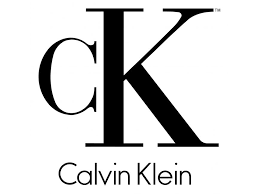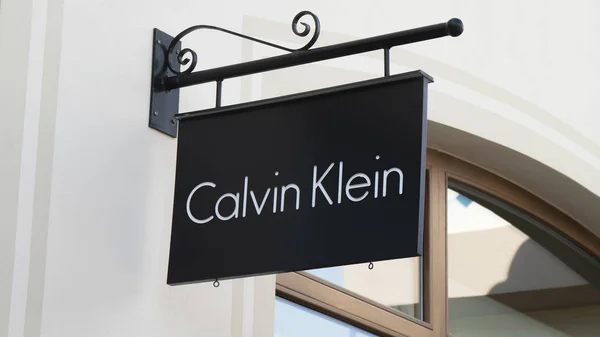Calvin Klein, founded by fashion designer Calvin Klein in 1968, is a globally renowned luxury brand known for its iconic designs, minimalist aesthetic, and provocative marketing campaigns. With its bold and innovative approach, Calvin Klein has redefined fashion and become synonymous with modernity and sophistication. This introduction provides a detailed overview of Calvin Klein, its history, brand identity, and the impact it has had on the fashion industry.
Calvin Klein’s journey began in New York City, where the eponymous designer sought to create a brand that would challenge traditional fashion norms. From the outset, Calvin Klein’s vision was to offer clean, minimalist designs that emphasized simplicity, elegance, and a sense of individuality. The brand quickly gained recognition for its exceptional craftsmanship, attention to detail, and a unique blend of classic and contemporary styles.
In the 1980s, Calvin Klein propelled itself into the cultural zeitgeist with its provocative advertising campaigns that pushed boundaries and sparked controversy. The brand’s advertisements featuring highly recognizable models and celebrities, such as Kate Moss and Mark Wahlberg, generated buzz and cemented Calvin Klein as a fashion-forward and trendsetting label.
Central to Calvin Klein’s success is its commitment to innovation and diversification. The brand has expanded its product offerings beyond clothing to include accessories, fragrances, eyewear, home furnishings, and more. This diversification strategy has allowed Calvin Klein to cater to a broader consumer base and establish itself as a lifestyle brand that transcends fashion.
Calvin Klein’s brand identity is characterized by its distinctive logo, the iconic “CK” monogram, which has become a symbol of style and sophistication. The brand’s design philosophy revolves around clean lines, minimal embellishments, and a focus on high-quality materials. Calvin Klein’s timeless designs embody a sense of understated luxury, making them accessible to a wide range of consumers.
In recent years, Calvin Klein has continued to evolve under the creative direction of various renowned designers. Each creative visionary has brought their unique perspective to the brand, while still staying true to Calvin Klein’s core values of modernity, simplicity, and sensuality. This ability to adapt to changing fashion trends while maintaining a consistent brand essence has contributed to Calvin Klein’s enduring success.
Furthermore, Calvin Klein’s marketing strategies have been instrumental in shaping its brand image and reaching its target audience. The brand’s campaigns are known for their provocative and boundary-pushing nature, often tackling social issues and embracing diversity. By connecting with consumers on a deeper level and challenging societal norms, Calvin Klein has cultivated a loyal following and garnered international recognition.
Unveiling the Marketing Strategies of Calvin Klein: Building a Timeless Brand
Calvin Klein, an iconic fashion brand known for its minimalist aesthetic and provocative campaigns, has captured the hearts of consumers worldwide. Behind its success lies a well-crafted and strategic marketing approach. This article delves into the marketing strategies employed by Calvin Klein, exploring how the brand has leveraged innovative campaigns, strategic collaborations, and a distinctive brand image to establish its position as a leader in the fashion industry.
Bold and Provocative Advertising: Calvin Klein is renowned for its boundary-pushing and provocative advertising campaigns. By embracing controversial themes and challenging societal norms, the brand has successfully captured attention and generated buzz. Iconic campaigns, such as the Calvin Klein Jeans ads featuring Brooke Shields in the 1980s, sparked both fascination and controversy, making Calvin Klein a household name. The brand’s willingness to push the boundaries has created a strong emotional connection with its audience and reinforced its reputation as a daring and trendsetting brand.
Celebrity Collaborations and Endorsements: Calvin Klein has strategically aligned itself with influential celebrities and tastemakers to enhance its brand appeal. Collaborations with renowned figures in the entertainment, fashion, and sports industries have allowed Calvin Klein to tap into different demographics and expand its reach. By associating its brand with notable personalities, such as Kate Moss, Mark Wahlberg, and Kendall Jenner, Calvin Klein has leveraged the star power and influence of these individuals to create a deeper connection with consumers and drive brand affinity.
Minimalist Brand Identity: Calvin Klein’s marketing strategy revolves around its distinctive minimalist brand identity. The brand’s logo, featuring the iconic “CK” monogram, is instantly recognizable and serves as a symbol of elegance and modernity. Calvin Klein’s clean and sleek aesthetic permeates its marketing materials, from print advertisements to digital campaigns, creating a cohesive brand image. By consistently presenting a minimalist visual language, Calvin Klein has carved out a unique niche in the market, attracting consumers seeking simplicity and sophistication.

Strategic Product Diversification: Calvin Klein’s marketing strategy includes strategic product diversification to cater to a wide range of consumers. Beyond its core apparel offerings, the brand has expanded into accessories, fragrances, eyewear, and home furnishings. This diversification allows Calvin Klein to capture a larger market share and extend its brand presence into various lifestyle categories. By maintaining a consistent design ethos across its product lines, Calvin Klein reinforces its brand identity and strengthens its position as a comprehensive lifestyle brand.
Digital Marketing and Social Media Engagement: Calvin Klein recognizes the power of digital marketing and has embraced social media platforms to engage with its target audience effectively. The brand leverages social media channels to share behind-the-scenes content, exclusive collaborations, and campaigns that resonate with its followers. By fostering a strong online community and utilizing digital platforms, Calvin Klein remains at the forefront of digital marketing trends and reaches consumers where they are most active.
Collaborations with Emerging Artists and Designers: To infuse fresh perspectives into its brand, Calvin Klein has collaborated with emerging artists and designers. These collaborations allow the brand to tap into new creative talent and bring innovative designs to its collections. By showcasing the work of up-and-coming artists and designers, Calvin Klein cultivates an image of artistic relevance and cultural currency.
Calvin Klein’s marketing strategies have played a pivotal role in establishing the brand as a global fashion icon. Through bold and provocative advertising, strategic collaborations, a minimalist brand identity, product diversification, digital marketing, and collaborations with emerging artists, Calvin Klein has successfully connected with consumers, created a strong brand image, and maintained its position at the forefront of the fashion industry. By staying true to its core values and consistently innovating, Calvin Klein continues to shape the future of fashion and inspire generations of style-conscious individuals.
Marketing Mix of Calvin Klien
The marketing mix of Calvin Klein encompasses the key elements that the brand strategically combines to promote its products and achieve its business objectives. Let’s delve into each component of the marketing mix in detail:
Product: Calvin Klein offers a wide range of products across various categories, including apparel, accessories, fragrances, eyewear, and home furnishings. The brand’s products are known for their minimalist design, impeccable quality, and contemporary appeal. Calvin Klein carefully curates its product offerings to align with its target audience’s preferences, focusing on clean lines, sophisticated silhouettes, and premium materials. By consistently delivering products that embody its brand ethos, Calvin Klein maintains its reputation as a symbol of timeless elegance and modernity.
Price: Calvin Klein positions itself as a premium brand, commanding higher price points that reflect the quality and exclusivity of its products. The brand’s pricing strategy is based on a combination of factors, including the use of high-quality materials, the craftsmanship involved, and its reputation as a luxury fashion label. Calvin Klein’s pricing strategy aims to communicate the value and prestige associated with owning its products, targeting consumers who are willing to invest in high-quality, fashionable items that transcend trends.
Promotion: Calvin Klein employs a multifaceted approach to promotion, leveraging various marketing channels to create awareness, engage with consumers, and drive brand loyalty. The brand’s advertising campaigns have been central to its promotional strategy, often featuring bold and provocative imagery that captures attention and sparks conversation. Calvin Klein’s advertising efforts extend to print media, television, digital platforms, and social media, ensuring broad reach and engagement across different demographics. The brand also collaborates with celebrities, influencers, and artists to amplify its promotional efforts and tap into their fan bases.
Place: Calvin Klein operates through a combination of company-owned stores, department store partnerships, e-commerce platforms, and authorized retailers. The brand strategically selects its distribution channels to maintain a premium and exclusive image while ensuring accessibility for its target consumers. Calvin Klein’s physical stores are designed to reflect its sleek and modern aesthetic, providing an immersive shopping experience. Simultaneously, its online presence enables global reach and seamless purchasing options, catering to the evolving preferences of digital-savvy consumers.
In conclusion, Calvin Klein’s marketing mix demonstrates a strategic integration of product, price, promotion, place, people, process, and physical evidence. By carefully crafting each element, Calvin Klein effectively communicates its brand values, reaches its target audience, maintains a premium image, and delivers a consistent brand experience that resonates with its discerning customers.
Also Read: Marketing Strategies and Marketing Mix of Lacoste
To read more content like this, subscribe to our newsletter



